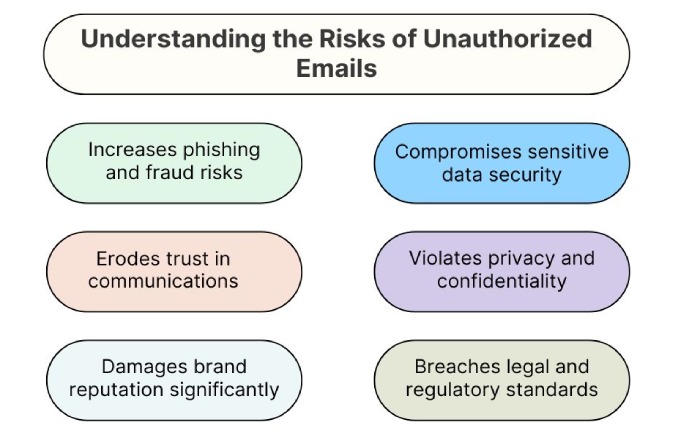Troubleshooting common BIMI issues
You probably already know that your logo is one of the biggest assets your brand owns, but wouldn’t it be great if it showed next to your emails in the inboxes of your recipients? The way to make that happen is BIMI, which stands for Brand Indicators for Message Identification. BIMI lets your logo show up next to your emails when they land in the recipient’s mailbox, which will help your brand stand out and build trust with your audience.
Like any other email authentication protocol, setting BIMI up is not always easy. While doing so, you’ll run into issues that prevent your logo from showing up next to your outgoing emails. But the good news is that it’s not impossible to fix these issues and reinforce your brand through your emails.
Before we get into how to fix BIMI issues, you should know what those issues are. Once your BIMI is set up properly, your emails will not only look professional but also enhance the audience’s trust in your brand.
Now, let’s check out some of the common BIMI problems and strategies by which they can be resolved.
What are the common BIMI problems that you can encounter?
Identifying the root cause of the problem is the best way to tackle it. And this is exactly what you should do if and when you come across any problem with BIMI or, for some reason, your logo isn’t visible in your audience’s inbox along with your emails.
Here are a few reasons why you might be caught in a fix with BIMI:
You’ve not enforced the DMARC policy
BIMI only works if your DMARC policy is set to p=quarantine or p=reject. But if you’ve configured your DMARC policy on the monitoring mode, that is, p=none, your logo will not appear in recipients’ inboxes. This is because, in the monitoring mode, you’re not taking any action against unauthorized emails; you’re simply tracking them.
That is to say, without an enforced DMARC policy, BIMI cannot validate your domain, and so your logo won’t be displayed.
Your BIMI record is incorrectly configured
The BIMI record is a key part of the configuration. It tells your email providers where to find your logo and confirms that it matches the requirements for BIMI. But if the DNS record is missing, has errors, or is formatted poorly, the email service won’t be able to fetch your logo or display it. Even a small typo, let’s say a missing character or just an incorrect URL, can break the whole process. It’s like sending someone somewhere without giving them the address or directions to the location.
You don’t have a Verified Mark Certificate (VMC)
Some email providers, such as Gmail, require additional proof that the logo is indeed owned by your brand, for which they ask for a Verified Mark Certificate (VMC). If you do not have this certificate, the logo will not appear, even if everything else is set up correctly.
Your logo does not meet BIMI standards
When it comes to implementing BIMI for your domain, you cannot simply upload a PNG or a PDF file of your logo. There are very specific requirements for BIMI setup, and your logo must meet them all for it to be displayed in the recipient’s inbox. One of the specifications is that the file must be in SVG Tiny PS format. In this case, standard SVG files or other common formats such as JPEG, PNG, or PDF will not work.
The recipient’s mailbox doesn’t support BIMI
Sometimes, the problem is not on your end but on the recipient’s end. Even if you have set everything up correctly, if the email provider or mailbox you’re sending the email to does not support BIMI, your logo will not be visible at all. In this case, all you can do is wait for the recipient provider to implement BIMI or focus on recipients from providers that do.
What can you do to fix these issues?
Now that we know what the potential problems are that you can face with BIMI, here’s what you can do to fix them:
Enforce DMARC policy
BIMI requires your DMARC policy to be set to either p=quarantine or p=reject. If your policy is set to p=none, you might want to upgrade it to a stricter policy, as only then can BIMI properly authenticate your messages and display your logo in recipients’ inboxes.
Fix your BIMI record
Even the slightest error or misconfiguration in your BIMI record can prevent your logo from appearing in your audience’s inbox. Your BIMI record should look something like this:
default._bimi.example.com. IN TXT “v=BIMI1;l=https://example.com/logo.svg;a=https://example.com/vmc.pem;”
If it doesn’t, check for issues like wrong URLs, missing elements, or improper formatting.
Get a Mark Certificate
If you don’t already have a Verified Mark Certificate (VMC) to prove the legitimacy of your own logo, now is the time get one. You can easily obtain your VMC online from an authorized authority.
Fix the format and size of your logo
As we discussed above, your logo should meet the specific requirements set by BIMI. This means that your logo must be in the SVG Tiny PS format, not PNG, JPEG, or other standard formats. Moreover, keep in mind that the logo is a square (1:1 aspect ratio) and has a transparent background. This will help your logo show up properly when your emails appear in inboxes.
Since BIMI is the only form of authentication that is visible to your audience, you wouldn’t want to mess it up. In reality, implementing BIMI is not a rocket science but it is always a good idea to seek expert assistance while doing so.
If you’re uncertain about the process or facing challenges, our team of experts at DuoCircle is here to guide you in strategizing and implementing BIMI for your entire domain portfolio. Get in touch with us today to know more.


